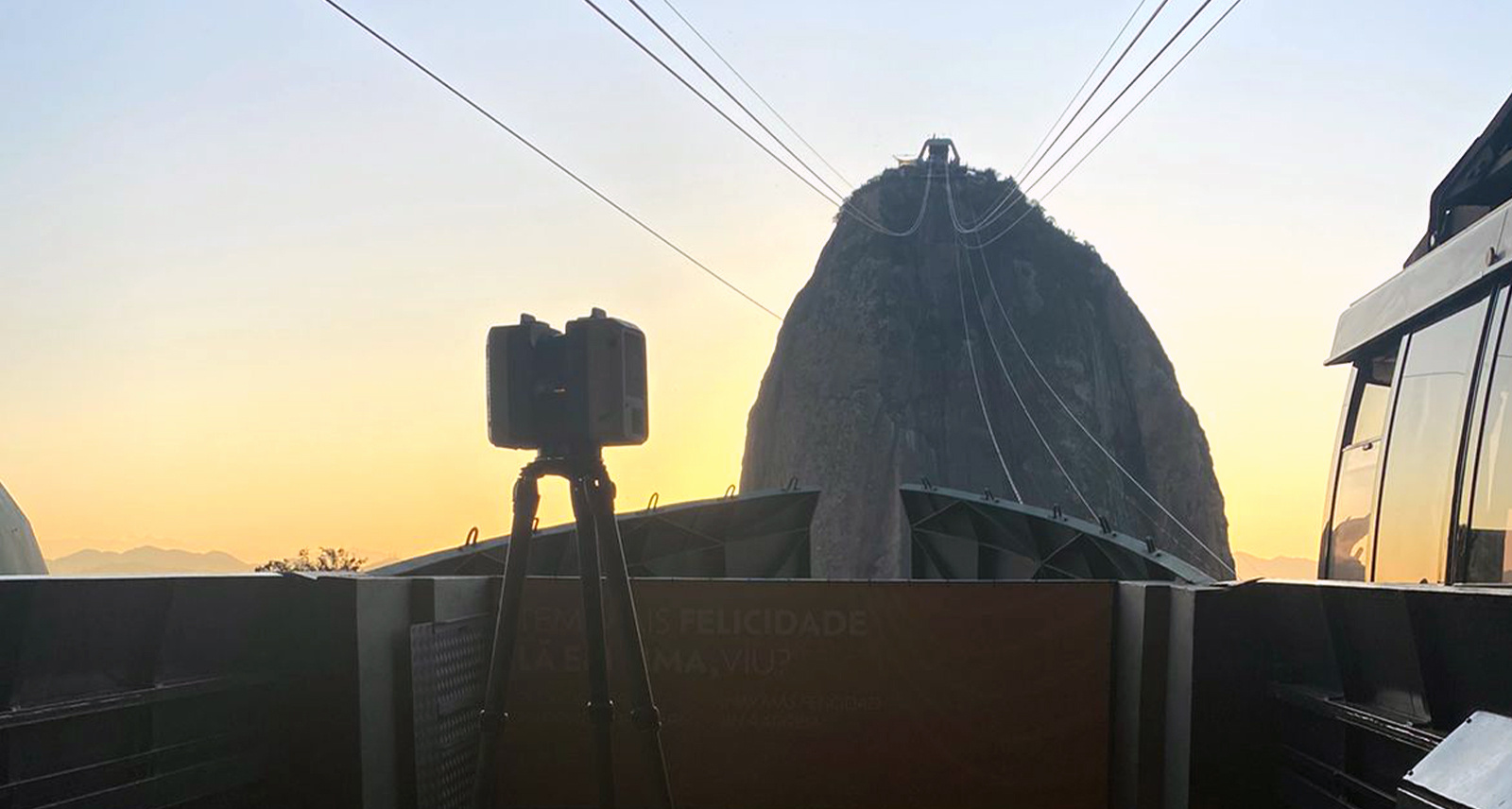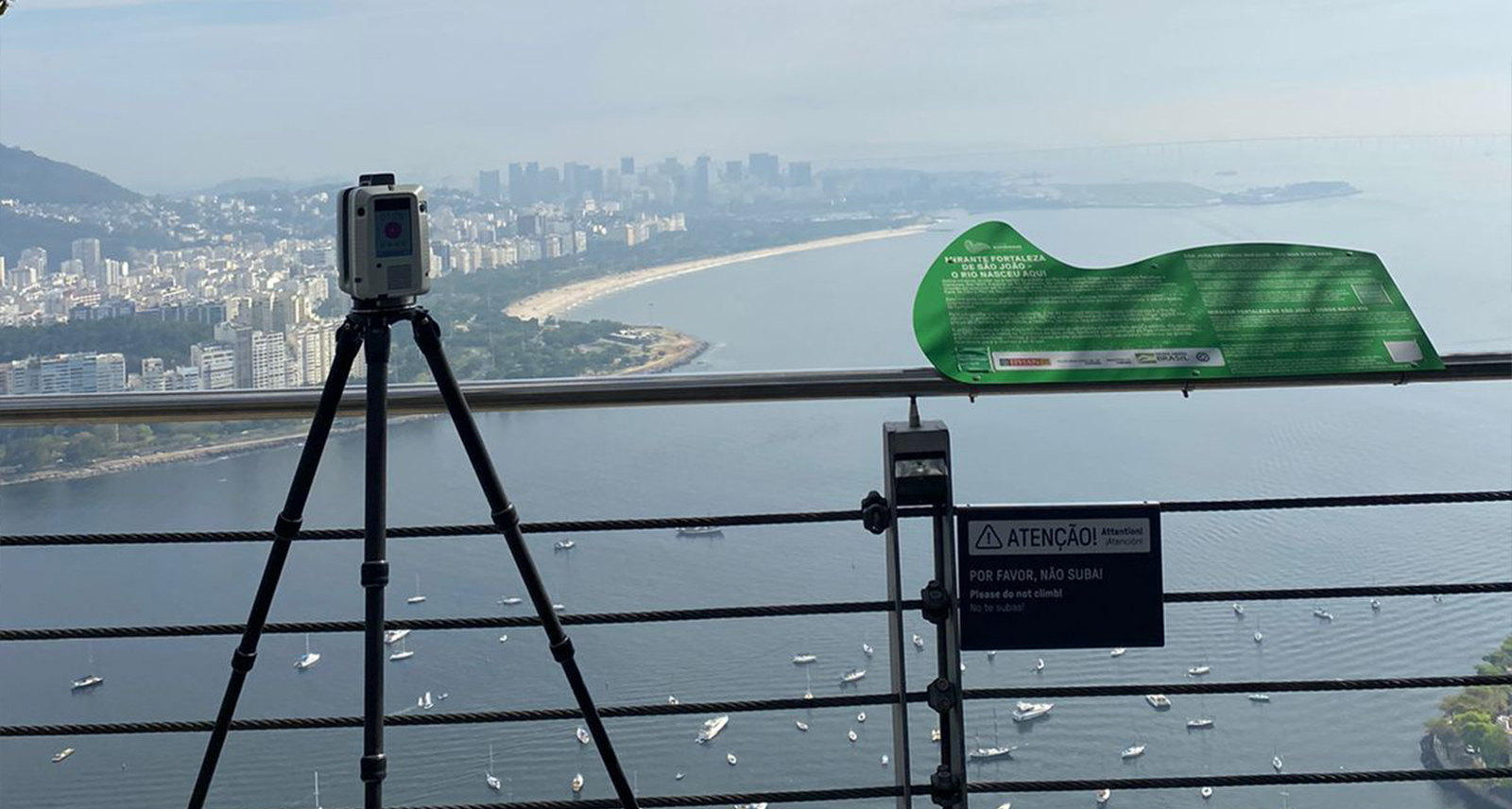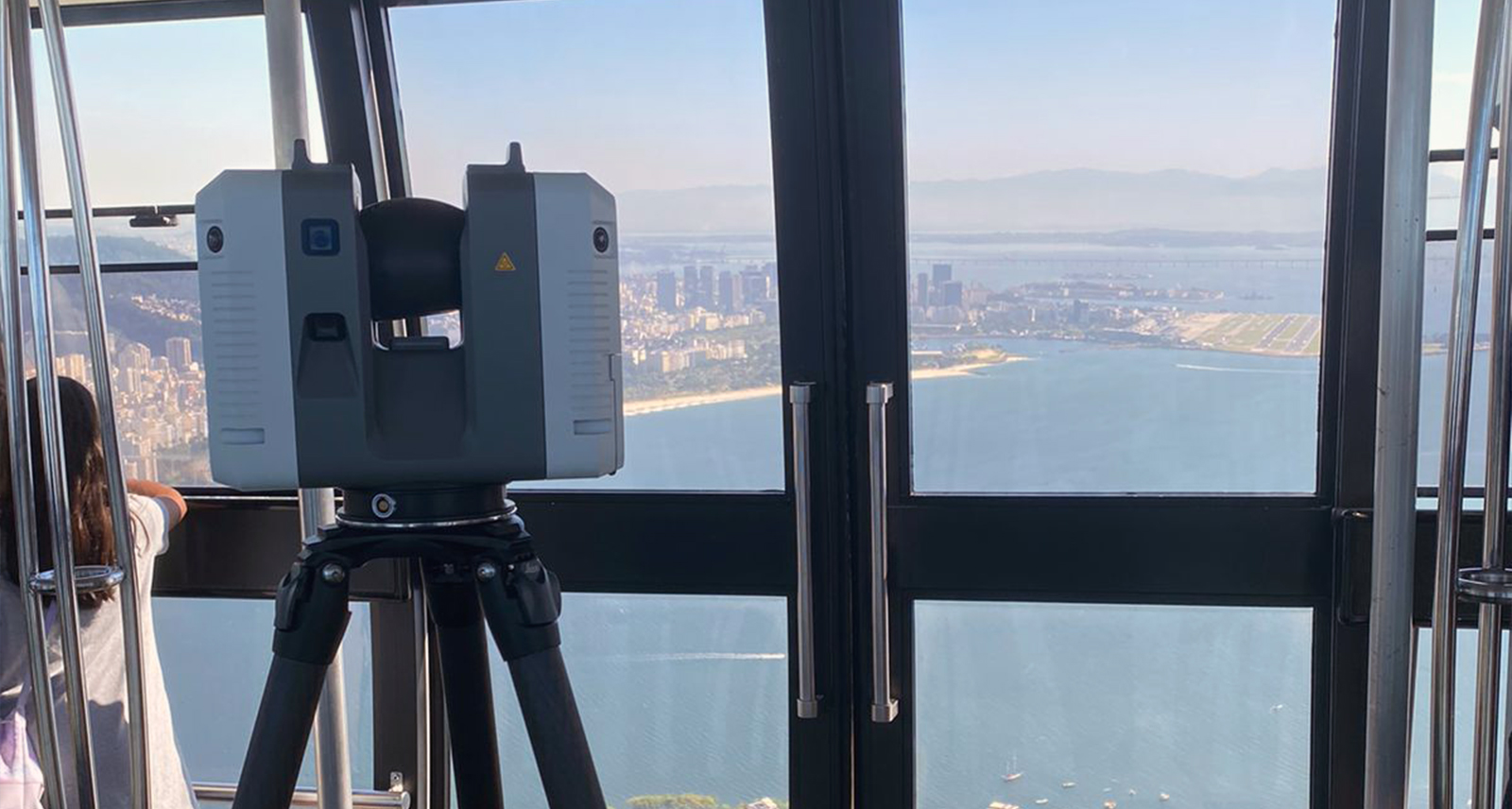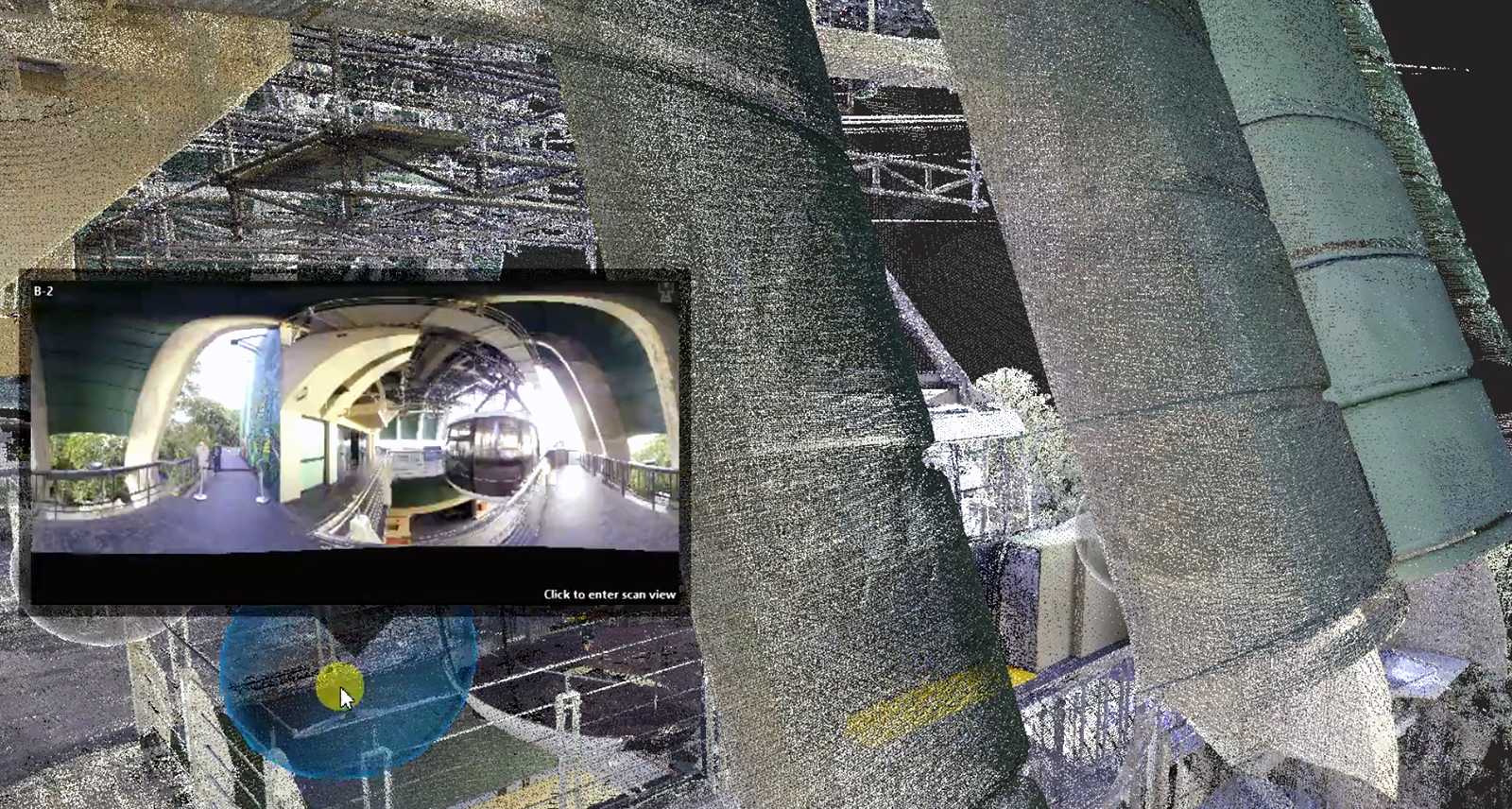Growing a Scanning Focused Business
Case Study


Founded at a time when laser scanning was just catching on and with new scanning systems launched, Brazilian surveying firm expanded rapidly.
Bruno Mathias de Oliveira began his career as a surveying engineer in 2010, working on a wide variety of projects around his home country of Brazil, as well as in Peru and Columbia. Through experience gained in projects that included subway lines in Rio De Janeiro, Olivera anticipated a rapidly growing demand for laser scanning services, and the forward evolution of scanning hardware and software. “There was a lot of scanning in Brazil and South America,” said Oliveira. “However, it was not yet widely adopted for many types of projects, especially large-scale projects.” He decided to form his own company, Futuro 3D Laser Scanning e Topografia, specializing in laser scanning, in 2018.
“When I started my company, I had no experience in scanning, did not know how to operate the equipment, or how to process the scans,” said Oliveira. “I had worked in surveying for many years and realised that if similar care and best practices were used, it would not be too complicated to produce precise 3D products for clients.” He started with one scanner, and now has 16.

In December of 2020 Oliveira joined with Paulo Siqueira Filho to boost the business, Siqueira had previous experience with laser scanning projects, and with his commercial skills helped Futuro 3D make the step up into the world of scanning. Work rapidly began to roll in, including for the famed Copacabana Palace Hotel in Rio, the Astra Zeneca Laboratory, rail stations, dozens of shopping malls, and specialised projects (as high as 6000 meters up) in the Andes.
Key to this growth, was getting Futuro 3D noticed, and Oliveira and Siqueira have been very effective in promoting his services through social media, such as LinkedIn. Futuro 3D soon attracted work in Brazil and South America, but has also consulted for projects in Portugal, Italy, Spain, and the United States. A prime example of such high-profile projects was the scanning of the ropeway infrastructure on Sugarloaf Mountain.
Sugarloaf
While there are as many as 250 peaks and hills name “Sugarloaf” around the globe, Pão de Açúcar in Rio de Janeiro, Brazil, at the mouth of Guanabara Bay on a peninsula that juts out into the Atlantic Ocean, is an international icon. Named for the shape of the traditional molded blocks of cane sugar used for shipping, this prominent geological formation, classified as a non-Inselberg Borhardt, rises 396 meters (1,300 feet) above the harbor. A ropeway, first constructed in 1912, carries nearly a million visitors per year to the top of the peak to enjoy the stunning views. Visitors take the first of two enclosed glass bondinho (cable cars) from Red Beach to the top of a smaller peak, Morro da Urca, where there are restaurants and shopping centers. Then on to the second cable car to the top of Sugarloaf.

Finding partners in surveying, engineering and architecture firms, providing scanning services they would not have the resources to execute in-house, is a substantial portion of business for Futuro 3D. And in the case of the Sugarloaf project, an architect who was studying design options for a proposed upgrade of the ropeway to include larger capacity cars, Futuro 3D was brought in to as-built scan the entire infrastructure. The challenge was fitting the work into a limited timeframe.
“The ropeway begins operation at 8:00am each day,” said Oliveira. “We only had a two-hour window each morning, but we were able to scan the four stations over 5 days and deliver daily the 3D point clouds the architect required.” The key to creating registered point clouds through multiple scan setups at each station was deployment of a relatively new class of scanner, and the field software to operate it.
Hardware and Software
Oliveira said that he had mainly used Leica Geosystem's solutions during his early surveying days, and while budget limitations for his startup meant buying a low-cost legacy style scanner in 2018, within a few months of operations he acquired the first of his Leica Geosystems scanners. “We have several Leica BLK360 laser scanners,” said Oliveira. “These are great for indoor projects, or small outdoor projects. However, for many outdoor, or large projects, we now have the Leica RTC360 and Leica ScanStation P40 laser scanners. The Leica Cyclone FIELD 360 in-field application to operate these has completely change our work life.”
Instantaneous cloud registration of progressive scans, Oliveira explained, means that they can check the completeness of the scans as they go, and they have a combined, precisely registered point cloud while still in the field. Pleased with the speed and quality of service, the same client has also tapped Futuro 3D to help with a project for a national museum.
Operationally, there were additional benefits. “Often with other scanners, we would need two people to keep up with the data management, transferring the data as we went,” said Oliveira. “For the RTC360 we chose iPads with 1TB of onboard storage, on which we run the Cyclone FIELD 360 app—we can just keep scanning and moving from setup to setup seamlessly.”
For many projects, Futuro 3D will use more than one type of scanner. Oliveira said he is very happy with their scalable portfolio from Leica Geosystems; they have BLK360s, an RTC360, the ScanStation P40, ScanStation C10 and in May of 2023 began trying out the handheld Leica BLK2GO with its combined visual/LiDAR SLAM. “We might use the BLK360 for each room of a facility, and the RTC360 for the exterior and adjacent buildings.”
A great advantage to using Leica Cyclone REGISTER 360 PLUS is that is can manage up to 500 scans at a time and allows export to RCP format point clouds. –Source:Futuro 3D
As Futuro’s standard customer deliverable is RCP (a commonly used format that can encompass multiple spatially indexed RCS format point clouds and is fully compatible with Autodesk products), Lecia Cyclone REGISTER 360 PLUS and Cyclone FIELD 360 is all that they need for nearly all projects. Cyclone FIELD 360 is an in-field app for Android and iOS mobile devices—tablets and even phones—to operate their RTC360, BLK360 and P-Series sensors and register the resulting point clouds. Cyclone FIELD 360 also provides the connection for final registration in Cyclone REGISTER 360 PLUS, which can manage up to 500 scans at a time. Cyclone REGISTER 360 PLUS provides Futuro with a guided workflow, for cloud registration and cleaning, optimisation, quality assurance, and publication in standard formats.
Daily captures are pre-registered in Cyclone FIELD 360 and many days work is combined and finalised in Cyclone REGISTER 360 PLUS before being published as an RCP file for their clients. –Source:Futuro 3D
In addition to providing RCP deliverables, Futuro leverages Leica Geosystem’s LGS format for virtual tours of the data. LGS is Lecia Geosystems’ powerful digital reality file format. This “project in a file” can carry not only point clouds, but also images, and supplementary data such as GeoTags and metadata. Utilising LGS in Leica TruView Desktop, or TruView LIVE (a browser-based version of the popular free viewer), the team, stakeholders, and customers can preview the data, collaborate, and review project progress.
Oliveira and Futuro 3D got into the business at an opportune time, right when laser scanning was becoming more common in his country and region. And as new systems such as the RTC360 came onto the market to help them meet this growing demand. Futuro’s model for growing a reality capture business began with analysing the productivity potential of the tools, building a skilled team, forming partnerships with engineering and surveying firms that did not have their own scanning capabilities, and leveraging digital platforms to promote their services. Having the best hardware and software for the work has enabled Futuro to rapidly deliver top quality reality data, often exceeding customers’ expectations.


























